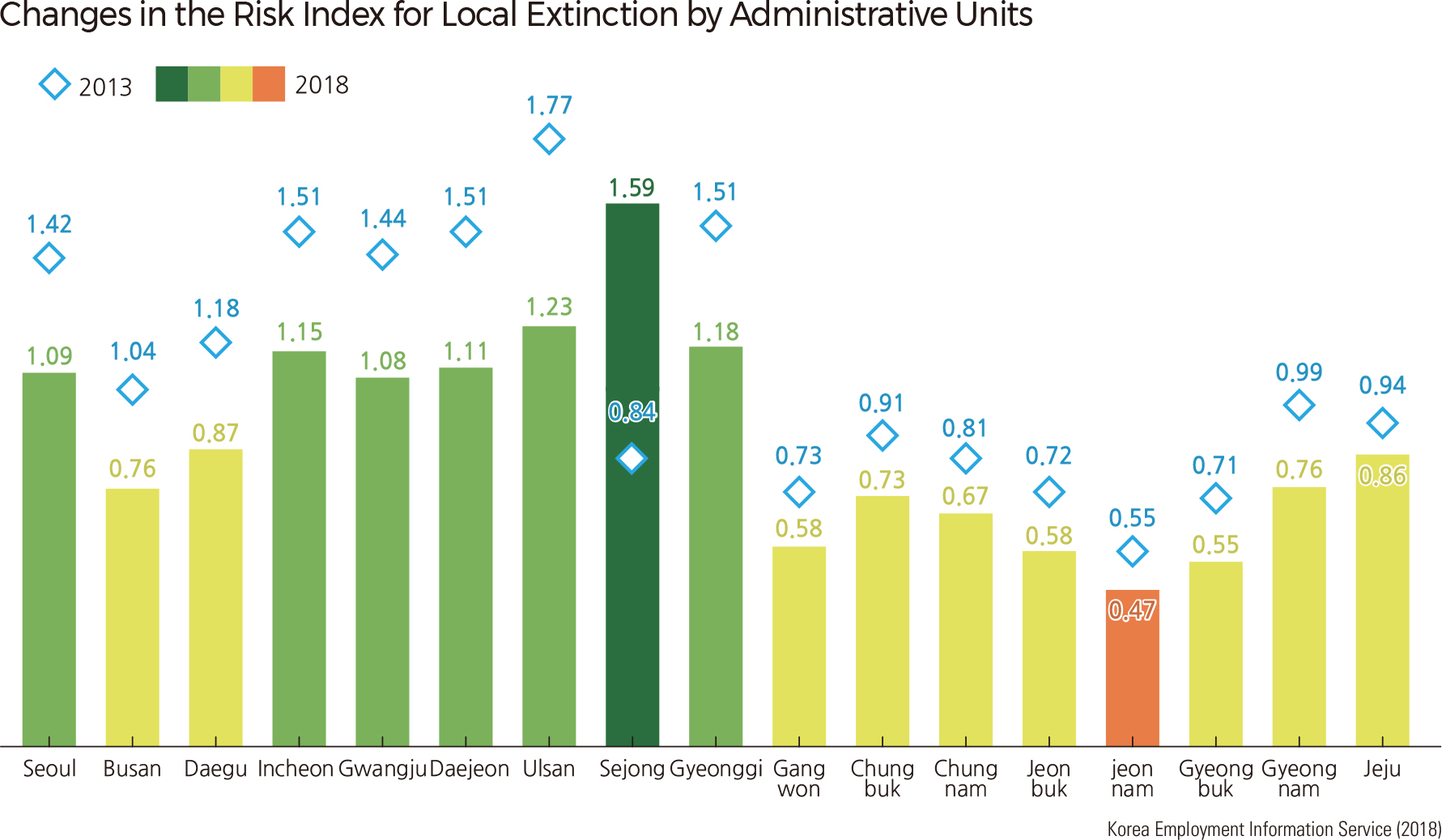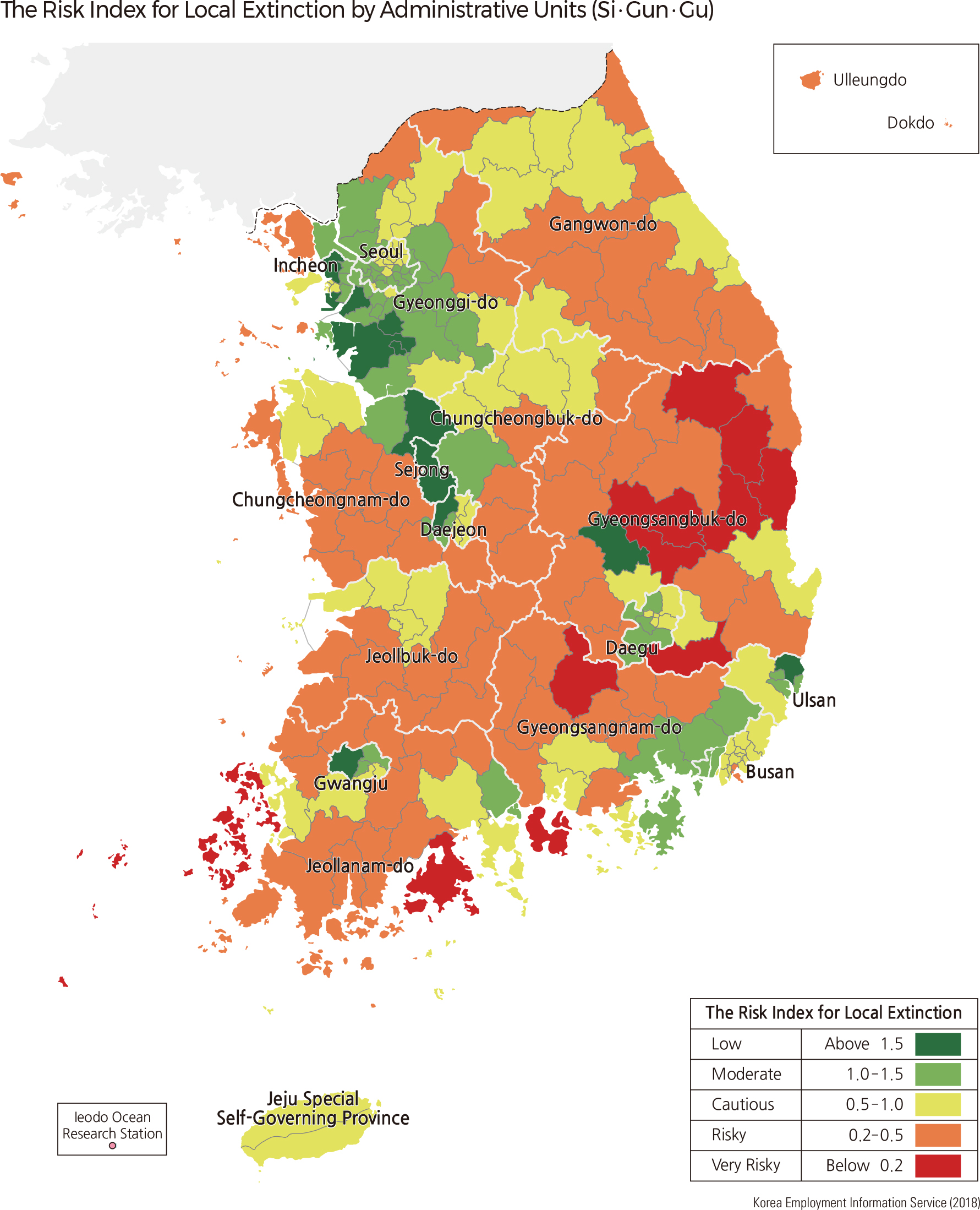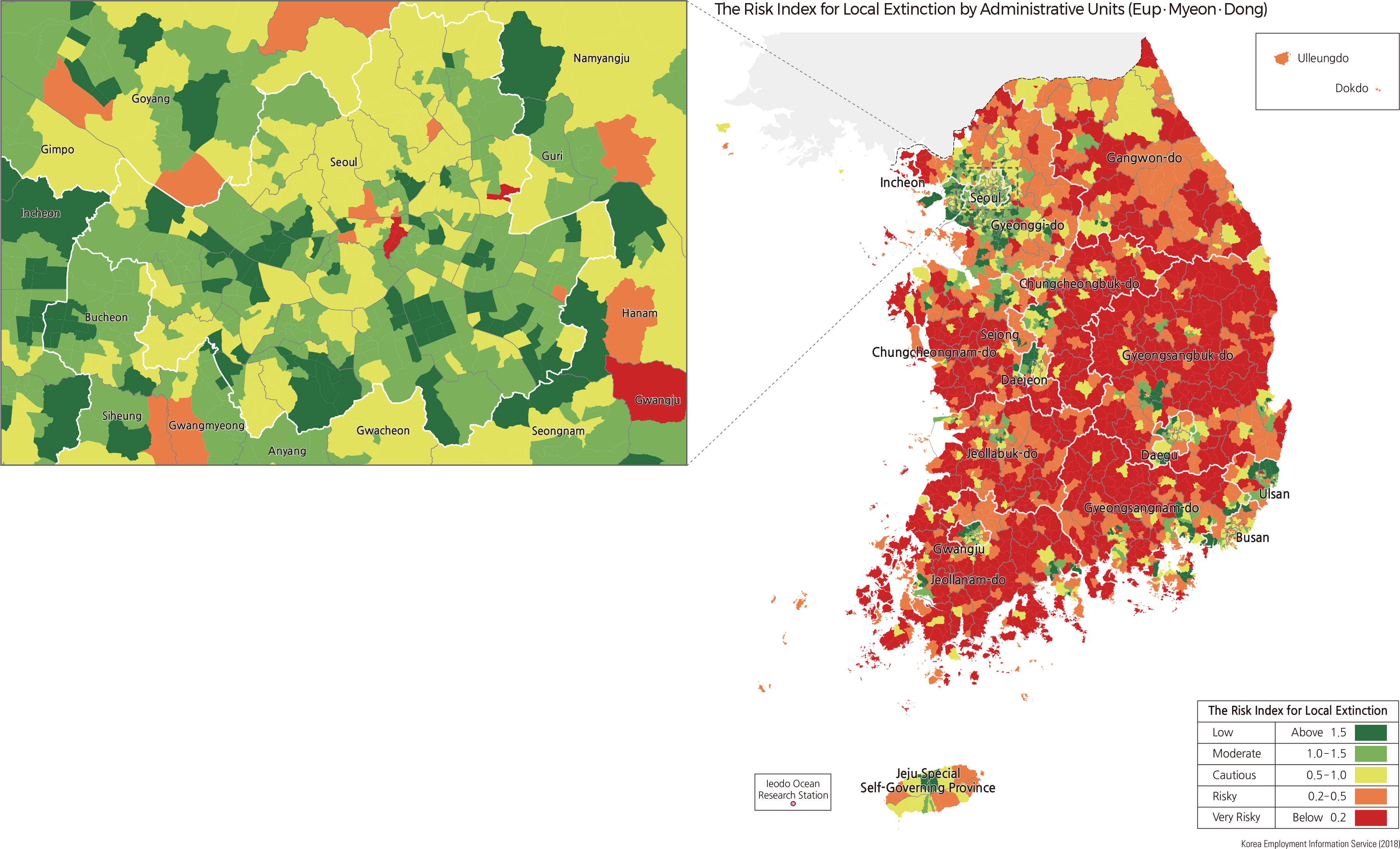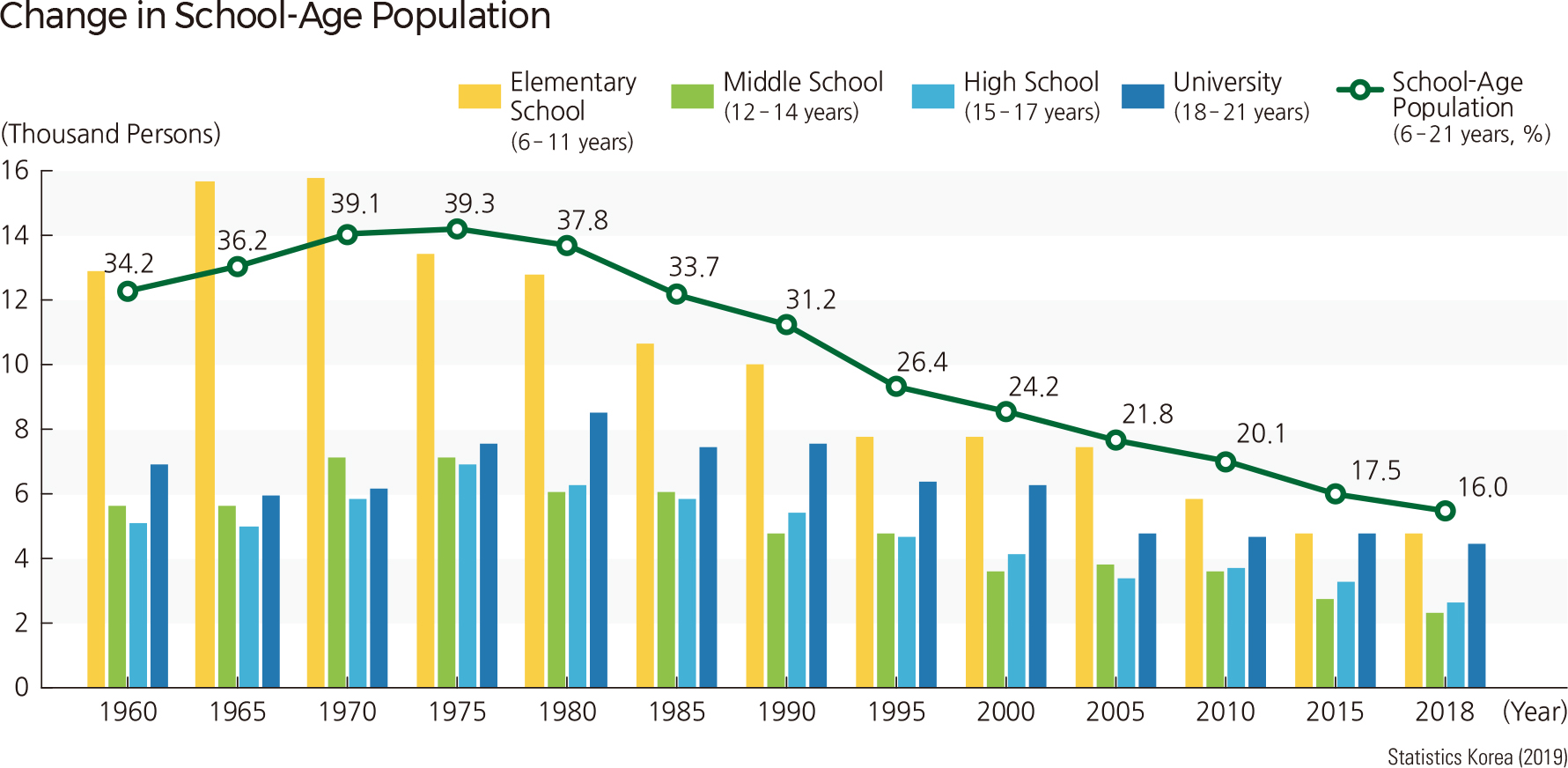English I 2019
While the Korean population is aging rapidly, the rural population is aging more rapidly than that in urban areas. Population aging issues may have greater impacts on small and medium cities and rural communities already suffering from socio-economic decline. The situation in local communities in the non-Capital areas is more critical than in local communities in the Capital area because of out-migration among youth. The risk index for local extinction is generally defined as the number of women aged 20 to 39 years in a region divided by the number aged 65 or older, with a greater risk of extinction if the index is below 0.5. The maps below shows non-Capital areas experiencing serious population loss and aging due to an outflow of young people and low fertility. The polarization between the Capital and the non-Capital areas has been expanding. If this trend continues, rural communities may be in danger of socially unstable situations and have less access to public services in the near future. Korea’s major large cities are also undergoing a demographic change, from the steady expansion they saw between the 1960s and the early 2000s. This net decline in the number of residents may be due to the outflow of people to new residential towns. |




